Oil Painting Supplies for Beginners
Updated: 21 Feb 2025

While the obvious supplies are oil paints, paintbrushes and something to paint on, there are other useful products that support the painting process.
Gloves
Latex gloves are a convenient option when you want your hands to be paint-free.
You can use gloves for mixing colors, a process that can sometimes get messy.
In addition, I use gloves when washing brushes to protect my hand while rubbing the brush on it (see below).
Note:
Some gloves are lightly powdered to prevent sweating. With these gloves, I do not recommend touching the canvas in order not to leave powder on it.
How to Use an Oil Paint Tube
Press the back of the tube in order to take out the paint. Proceed, as the tube is getting empty.
Pressing the middle of the tube pushes some paint backward, making it difficult to take out paint smoothly.
Tip:
You can insert paint back into the tube by tapping the back of the tube on the work surface.
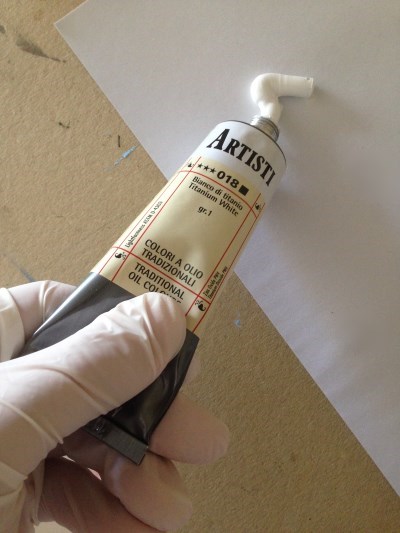 Pressing the back of the tube
Pressing the back of the tube
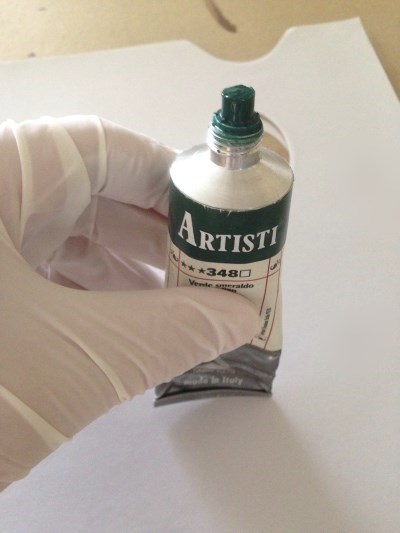 Inserting paint into the tube
Inserting paint into the tube
How to Reuse Oil Paint
After finishing a painting session, sometimes there is paint left on the palette.
You can store the paint in a freezer compartment in order to stop its hardening process and to reuse it later.
Oil paints remain usable for several weeks or more, depending on how well you seal them.
A plastic box, glassware, aluminum foil, disposable plastic plate wrapped in plastic wrap, or any other way, keeps the paint usable, as long as the sealing is airtight.
Oil paints do not dry (they have no water in them); they harden by exposure to air (oxidation).
Keep in mind:
Some pigments are toxic and should be wrapped properly and kept away from food!
 Oil paints in a freezer
Oil paints in a freezer
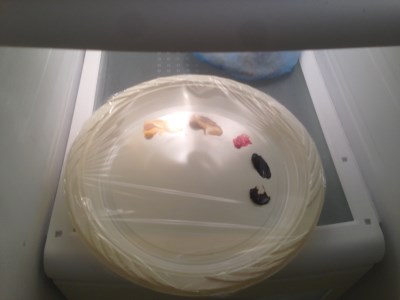 Airtight wrap
Airtight wrap
How to Wash Paint brushes
If you are sensitive to odors from thinners, and concerned about the toxicity of these materials, you can use dish soap and water.
Wash the brushes several times until no paint is coming out of them (put some dish soap on your gloved hand and rub the paintbrush on it, wash, repeat).
Then, dry gently with a towel and store with the bristles up to keep their shape.
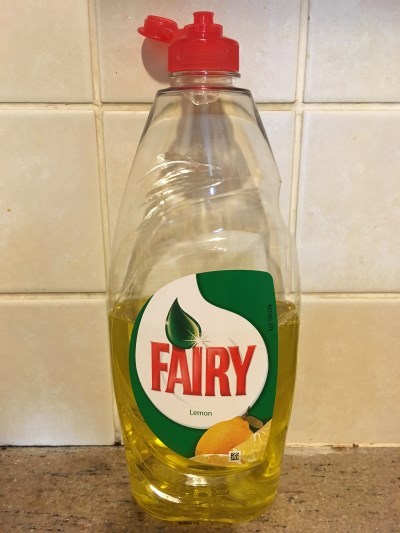 Dish soap
Dish soap
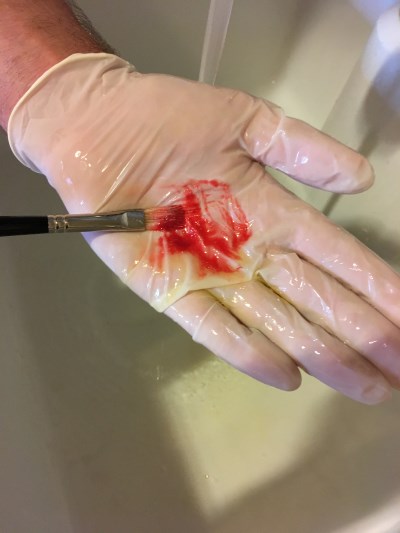 Washing a brush
Washing a brush
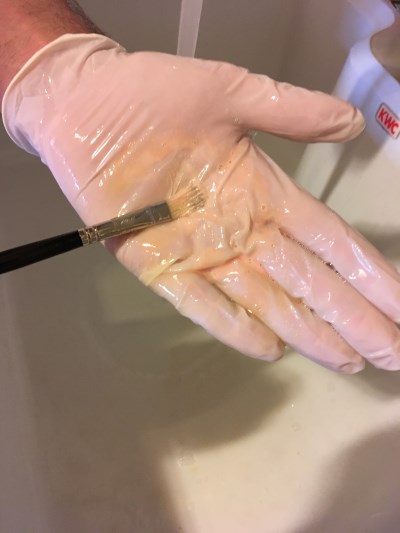 Washing several times
Washing several times
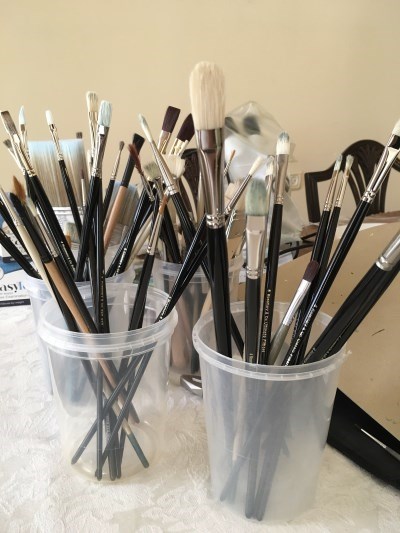 Storing paintbrushes
Storing paintbrushes
Good to know:
If paint remains on the brush, it hardens and renders the brush useless.
For more info on paintbrushes, visit my guide for oil painting brush types.

Paper Towels
Paper towels are great for cleaning paintbrushes and palette knives while painting, or to open and close oil paint tubes in a clean way.
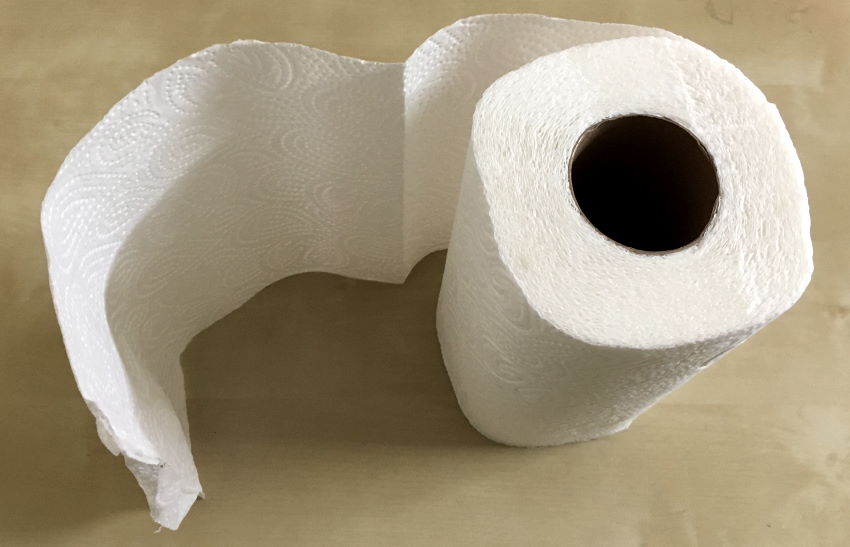
Another option is to use a cloth.
In addition, you can use them gently to remove excessive paint from the canvas.
Palette
A palette is a board for organizing and mixing oil paints.
Palette for oil paints is made of wood, plastic and other hard materials. A glass palette or a specially designed glass table is easy to clean.
My favorite is a disposable palette made of impermeable, non-absorbent paper.
Green hack:
You can use old magazines as a disposable palette.
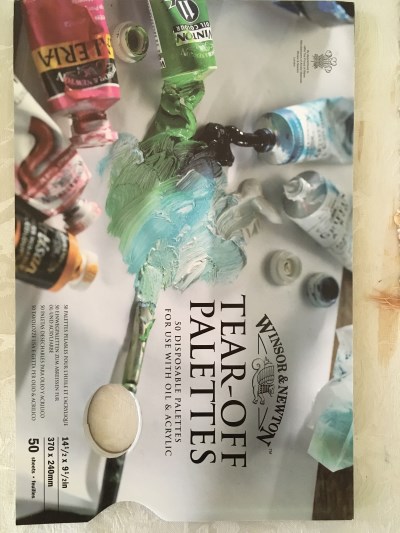 Winsor & Newton palette
Winsor & Newton palette
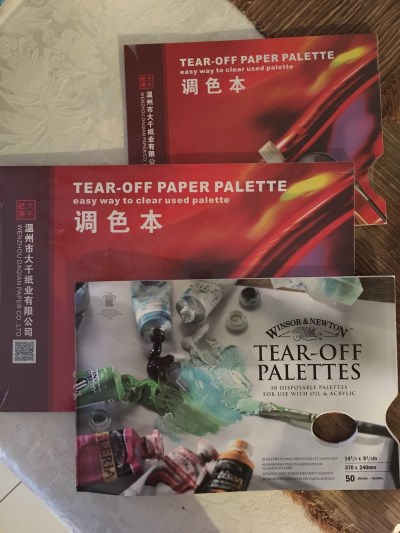 Palettes in different sizes
Palettes in different sizes
Disposable paper palettes come in different sizes and with different amounts of pages.
Arrange and mix oil paints on disposable paper. At the end of a painting session, tear off the disposable page and throw it (without having to clean it).
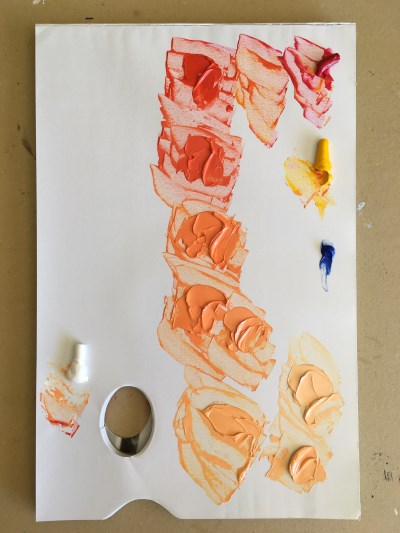 Mixing paints on a palette
Mixing paints on a palette
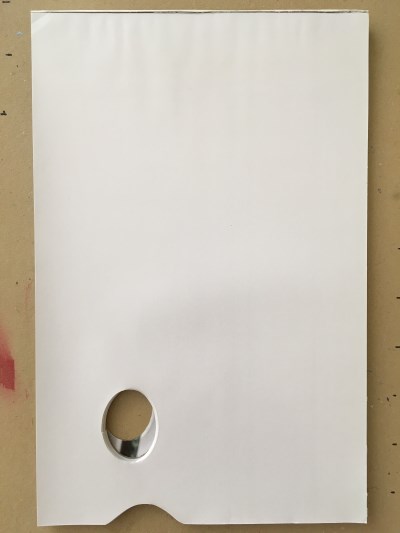 Paper sheet is torn
Paper sheet is torn
Canvas for Oil Painting
You can use a high-quality cotton canvas or a linen canvas, which is more expensive.
You do not have to frame your oil paintings when you want to hang them.
In that case, it is important to buy a canvas without pins that connect the fabric to the wood on the sides of the frame, but on the back of the frame (where they cannot be seen).
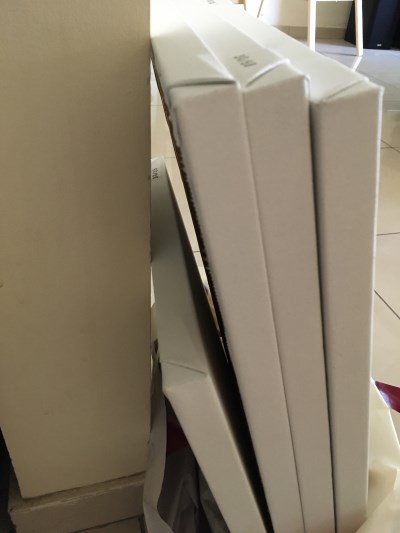 No pins on the sides
No pins on the sides
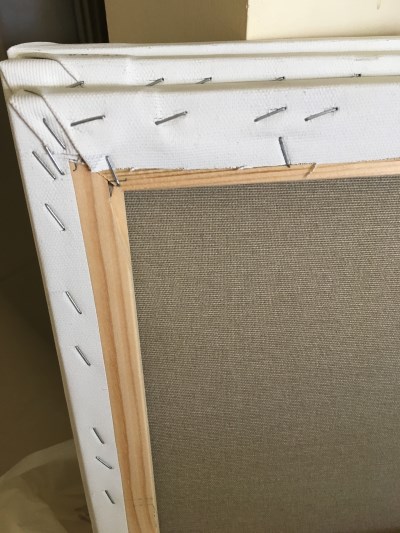 Pins on the back
Pins on the back
You can paint the sides of the canvas when hanging it without a frame.
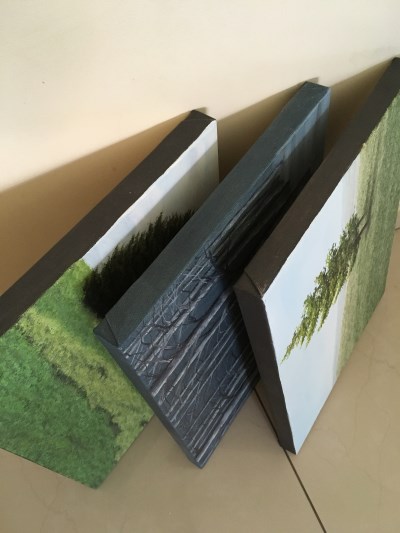 Painted sides
Painted sides
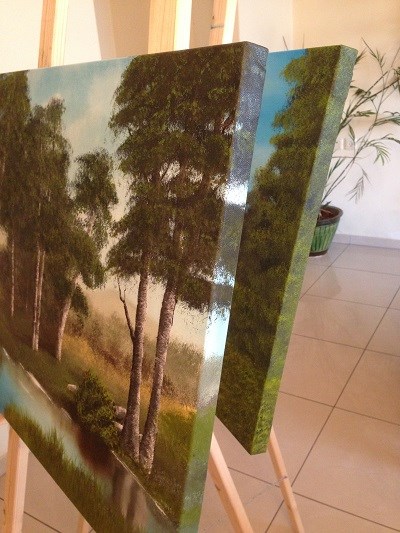 Painted sides
Painted sides
Tip:
After a painting session, you can mix the remaining oil paints (that are left on the palette).
Use this mixture to paint the sides of your canvas.
Let the paint harden for several days, or more, before you hang it.
How to Hang a Canvas
I do not use frames. I like to hang my painted canvases tight against the wall.
For that, I use nails.
If the width of the canvas is 40 cm or more, I use two nails.

When using two nails, I make sure they are balanced, using a spirit level.

The wooden frame of the canvas is suitable for hanging it on nails.
Pay attention that the nails do not stick out too much, so that they do not damage the canvas.
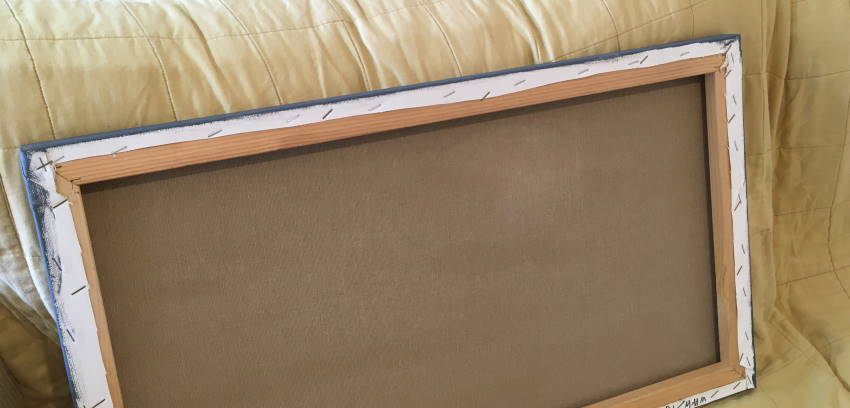
I find this the fastest and most convenient way to hang my paintings.
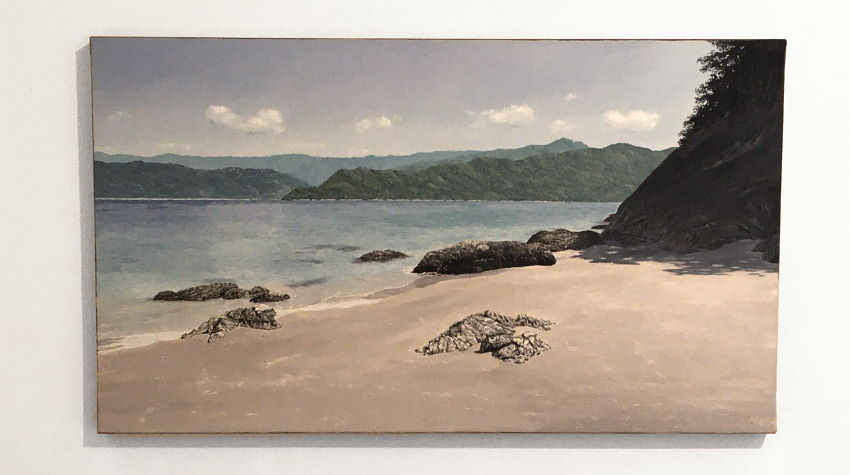
Paper Pads for Oil Paint
Supply for oil painting is not cheap. Compared to paper for pencil drawings, a canvas is expensive.
One solution is paper pads designed for oil paint. These paper sheets are NOT of high quality.
However, paper for oil paint is great for training, especially for beginners.
Another great use for them is for creating color palettes or color charts.
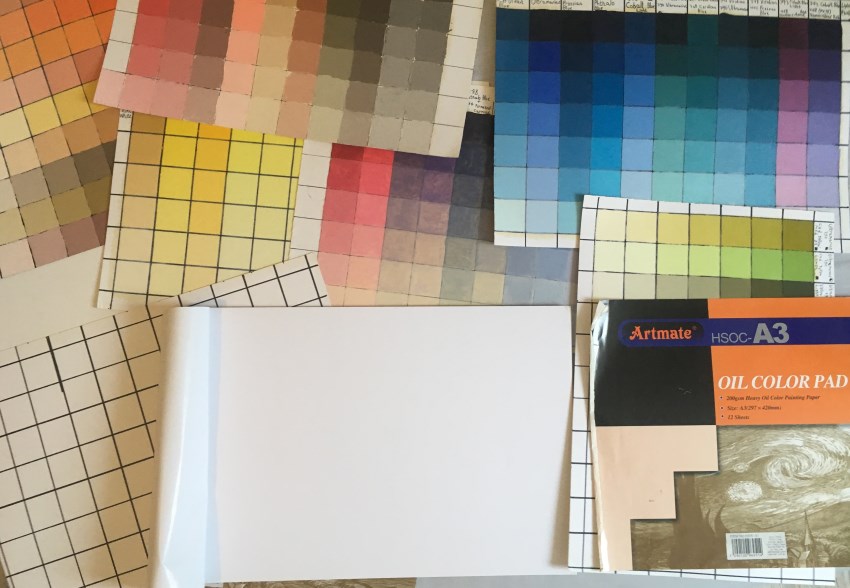 Paper sheets for oil paint
Paper sheets for oil paint
I start by drawing a grid with a black marker pen.
Next, I mix each pigment I have with an increasing amount of white pigment (titanium).
In addition, I mix two pigments (for example, blue and yellow) with an increasing amount of white.
Color palettes are a fast way to choose the color and brightness value I want to use.
Ideas for Paintings
Copyright law protects photographs, drawings, comics and images that you can find on the Internet.
In order to use images to get ideas for paintings or to draw them from observation, use royalty-free images.
There are websites that provide free images for use by artists or anybody else.
Some examples:
In addition, with some experience in linear perspective, you can learn how to draw from imagination.
How and Where to Sign a Painting
It is customary to sign finished artworks. You can sign using a synthetic round brush or a synthetic liner brush.
For a realistic painting, in which a signature can ruin its look, sign on the back of the canvas using a marker pen or a technical pen.
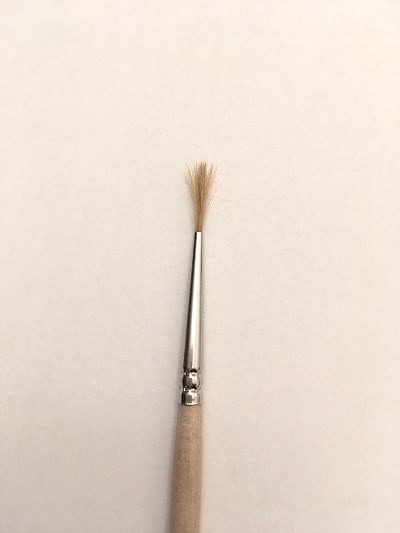 Round synthetic brush
Round synthetic brush
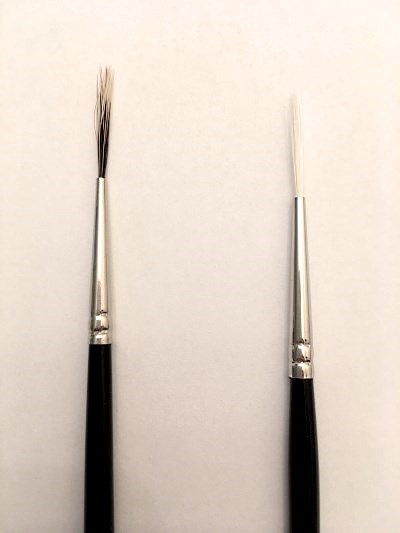 Liner synthetic brush
Liner synthetic brush
In addition to a signature, add contact details, such as a phone number, website address, or e-mail address, on the back of the canvas.
Add some technical details, like canvas dimensions, and a date.
Techniques for Oil Painting
Oil painting is a particularly forgiving medium. If something in the painting does not work, it is possible to wipe it with a paper towel or a cloth. Another solution is to paint over it once the lower layer of oil paint hardens.
Unlike other mediums, oil paints are very easy to mix and therefore create a huge amount of colors and shades.
With a limited palette of 5 colors (red, blue, yellow, brown, and white), you can mix many colors and shades.
Wet on wet, or alla prima, is a technique in which painting is done on top of a fresh layer of paint, and thus the layers can be mixed with one another.
Wet on dry means waiting for the bottom layer to harden and only then painting a new layer on top of it.
Divide and conquer is the perception that in a complex painting, it is better to work on small parts of it and make the task less complicated.
Techniques or painting styles are a matter of personal preference.
From time to time (when painting), remember to move back from the canvas in order to see the big picture.
Where to Go Next?
Once you have some painting materials, it is time to learn how to mix oil paints.
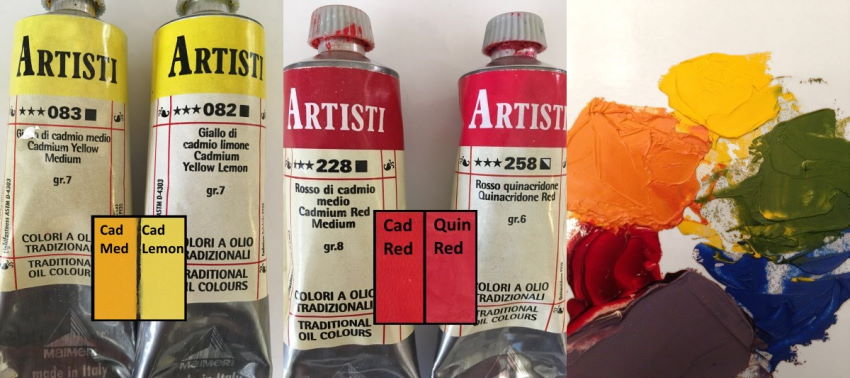
For painting realism, visit my tutorial on how to paint realistically.

To learn more about the illusion of depth when painting, visit my depth drawing tutorial.